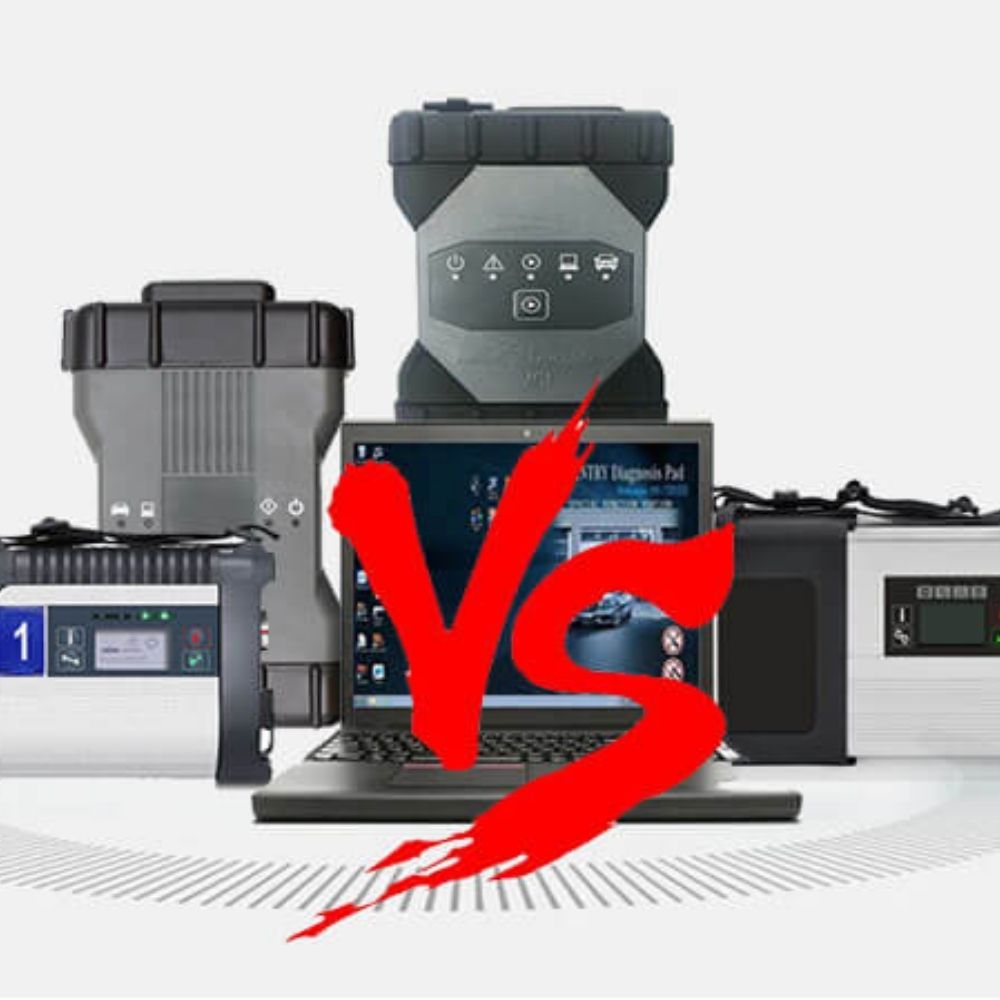
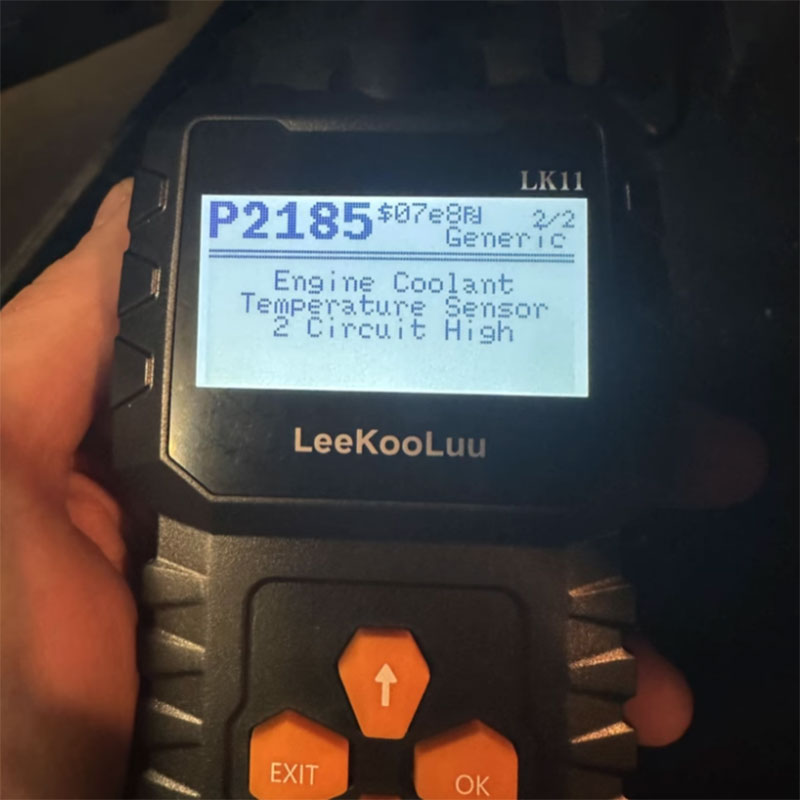
Symptoms of a Bad Engine Coolant Sensor
Contents
- Common Symptoms of a Failing Coolant Temperature Sensor
- 1. Engine Performance Degradation
- Fuel Economy Reduction
- Black Exhaust Emissions
- 2. Temperature Regulation Problems
- Engine Overheating
- Temperature Gauge Fluctuations
- 3. Warning Indicators and System Responses
- Check Engine Light Activation
- Cooling Fan Malfunction
- 4. Starting and Operational Irregularities
- Cold Starting Difficulties
- Rough Idle and Stalling
- Recognizing the Signs of ECT Sensor Malfunction
- How to Diagnose a Bad Engine Coolant Sensor
- Preliminary Inspection and Code Retrieval
- Resistance Testing Methodology
- Voltage Testing Approach
- Advanced Diagnostic Techniques
- Interpreting Diagnostic Results
- Get Professional Help with AutoExplain
Engine coolant temperature sensors play a vital role in your car’s performance. They relay crucial information to the engine control unit (ECU), enabling optimal fuel mixture, ignition timing, and fan operation. A faulty sensor can throw these systems out of whack, leading to a range of problems. Here’s what you need to know about the Symptoms Of A Bad Engine Coolant Sensor.
Common Symptoms of a Failing Coolant Temperature Sensor
1. Engine Performance Degradation
Fuel Economy Reduction
A failing coolant temperature sensor can cause a significant decrease in fuel efficiency. If the sensor incorrectly signals that the engine is running colder than it actually is, the ECM may adjust the air-fuel mixture to be excessively rich. This results in higher fuel consumption, increased emissions, and potential damage to the catalytic converter over time.
Black Exhaust Emissions
A faulty ECT sensor may cause the engine to run on a rich fuel mixture, leading to incomplete combustion and black smoke coming from the exhaust. This is a clear indication of excess fuel being burned inefficiently, often noticeable during acceleration or high RPMs.
2. Temperature Regulation Problems
Engine Overheating
A malfunctioning coolant temperature sensor may fail to trigger the cooling fans, leading to engine overheating. Overheating can result in severe damage, including blown head gaskets, warped cylinder heads, and even cracked engine blocks, leading to costly repairs.

Temperature Gauge Fluctuations
A faulty ECT sensor can cause erratic readings on the temperature gauge, leading to misleading temperature indications. The gauge may suddenly jump between normal and high temperatures or become completely unresponsive, making it difficult to monitor the engine’s actual condition.
3. Warning Indicators and System Responses
Check Engine Light Activation
A failing ECT sensor often triggers the check engine light. Common OBD-II trouble codes associated with coolant temperature sensor failure include:
- P0115 – Engine Coolant Temperature Circuit Malfunction
- P0116 – Engine Coolant Temperature Circuit Range/Performance Problem
- P0117 – Engine Coolant Temperature Circuit Low Input
- P0119 – Engine Coolant Temperature Circuit Intermittent
- P2185 – Engine Coolant Temperature Sensor 2 Circuit High
If your check engine light is illuminated along with temperature-related issues, it’s crucial to have your vehicle scanned with a diagnostic tool to determine the exact problem.
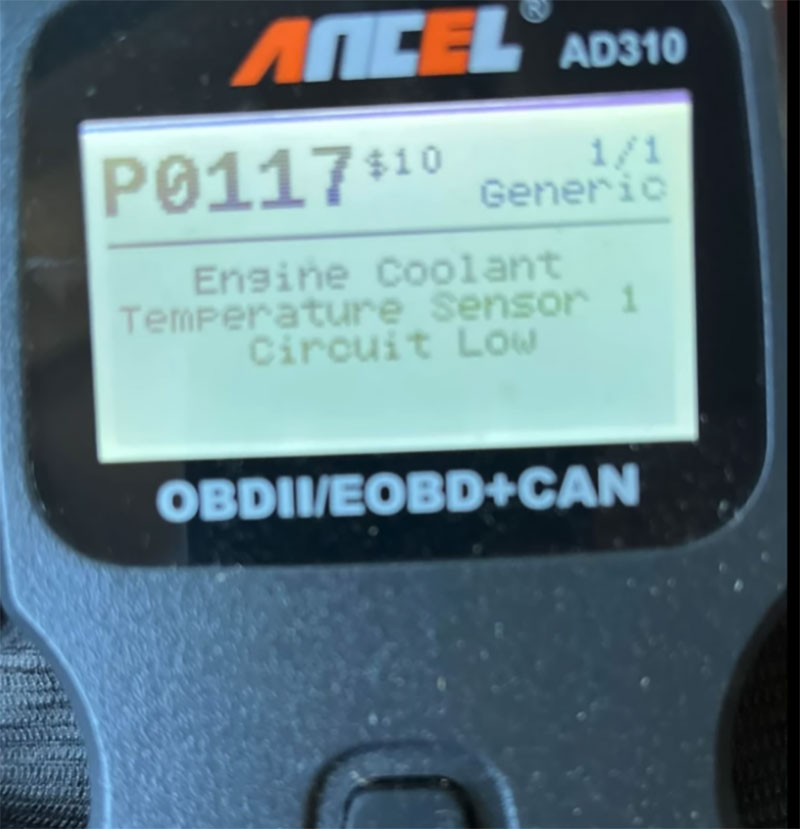
=> Related topic:
Cooling Fan Malfunction
A defective coolant sensor can lead to improper cooling fan operation, either causing it to run continuously or fail to activate when needed. This can lead to overheating, excessive noise, and unnecessary battery drain.
4. Starting and Operational Irregularities
Cold Starting Difficulties
A faulty ECT sensor may fail to signal the ECM that the engine is cold, resulting in insufficient fuel delivery during startup. This can lead to extended cranking times, multiple failed starts, or even stalling after ignition.
Rough Idle and Stalling
Incorrect temperature readings can cause fluctuating idle speeds or a rough idle due to improper fuel mixture adjustments. In extreme cases, the vehicle may stall when stopping or idling inconsistently.
Recognizing the Signs of ECT Sensor Malfunction
When diagnosing an engine coolant temperature sensor failure, pay close attention to:
- Fuel consumption and black exhaust emissions
- Engine overheating or cooling system failure
- Erratic temperature gauge readings
- Check engine light with related diagnostic trouble codes
- Starting problems, rough idle, or frequent stalling
How to Diagnose a Bad Engine Coolant Sensor
Preliminary Inspection and Code Retrieval
- Visual Inspection – Check the sensor and its electrical connections for signs of damage, corrosion, or coolant leakage. Inspect the wiring harness and connector for damaged insulation or bent pins.
- OBD-II Scan – Use a diagnostic scanner to retrieve trouble codes. Codes in the P0115-P0119 range indicate potential ECT sensor circuit issues.
- Live Data Analysis – Advanced scanners allow monitoring of real-time temperature readings, enabling comparison with expected engine operating conditions.
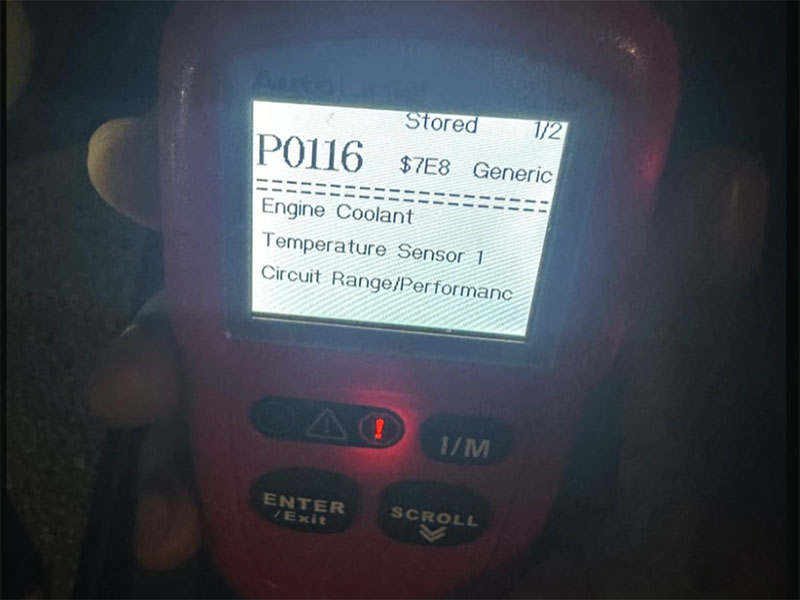
Resistance Testing Methodology
- Disconnect the Sensor – Ensure the ignition is off and unplug the sensor.
- Measure Cold Resistance – Using a multimeter set to 20kΩ, check resistance at room temperature (typically 2,000-3,000 ohms at 20°C for NTC sensors).
- Measure Hot Resistance – Start the engine and let it warm up. A functioning sensor should show resistance dropping significantly (200-300 ohms at 80-90°C).
- Controlled Testing – Remove the sensor and submerge it in water of varying temperatures for precise response measurements.
Voltage Testing Approach
- Back-Probe the Sensor – Keep the sensor connected, turn the ignition to “on,” and back-probe the signal wire with a multimeter set to DC voltage.
- Cold Sensor Voltage – A cold sensor should read around 3.00-3.50V.
- Hot Sensor Voltage – At normal operating temperature, voltage should drop to around 1.00-1.30V.
- Identifying Circuit Issues – If voltage remains at 5V, the circuit may be open; if at 0V, there could be a short.
Advanced Diagnostic Techniques
- OBD-II Live Data Analysis – Monitor real-time ECT sensor readings alongside thermostat, radiator temperature, and fuel trim adjustments.
- Controlled Circuit Testing – Disconnecting the sensor should result in a -40°F reading, while shorting the circuit should trigger a 284°F reading.
- System Evaluation – Check coolant level, thermostat function, and radiator flow to rule out external factors affecting sensor readings.
Interpreting Diagnostic Results
- Normal Resistance Values: 5,000-6,000Ω at 0°C, 2,200-2,800Ω at 20°C, 270-380Ω at 80°C.
- Voltage Readings: 4.00-4.50V at 0°C, 3.00-3.50V at 20°C, 1.00-1.30V at 80°C.
- Common Failures: Open circuits (constant 5V reading), short circuits (0V reading), degraded response time (slow resistance changes).
- Differentiating Issues: If resistance values are normal but voltage readings are incorrect, suspect wiring or ECM issues.
Get Professional Help with AutoExplain
If you suspect a faulty coolant temperature sensor, don’t wait until the problem worsens. At AutoExplain, we provide expert car diagnostics, coding, and programming support to help you resolve vehicle issues efficiently.
📞 Contact us now via WhatsApp at +1(936)2896695 for professional assistance with your vehicle! Our team is ready to help you troubleshoot and fix engine sensor failures and other automotive issues.


Vediamo vs Xentry: What’s the Difference?
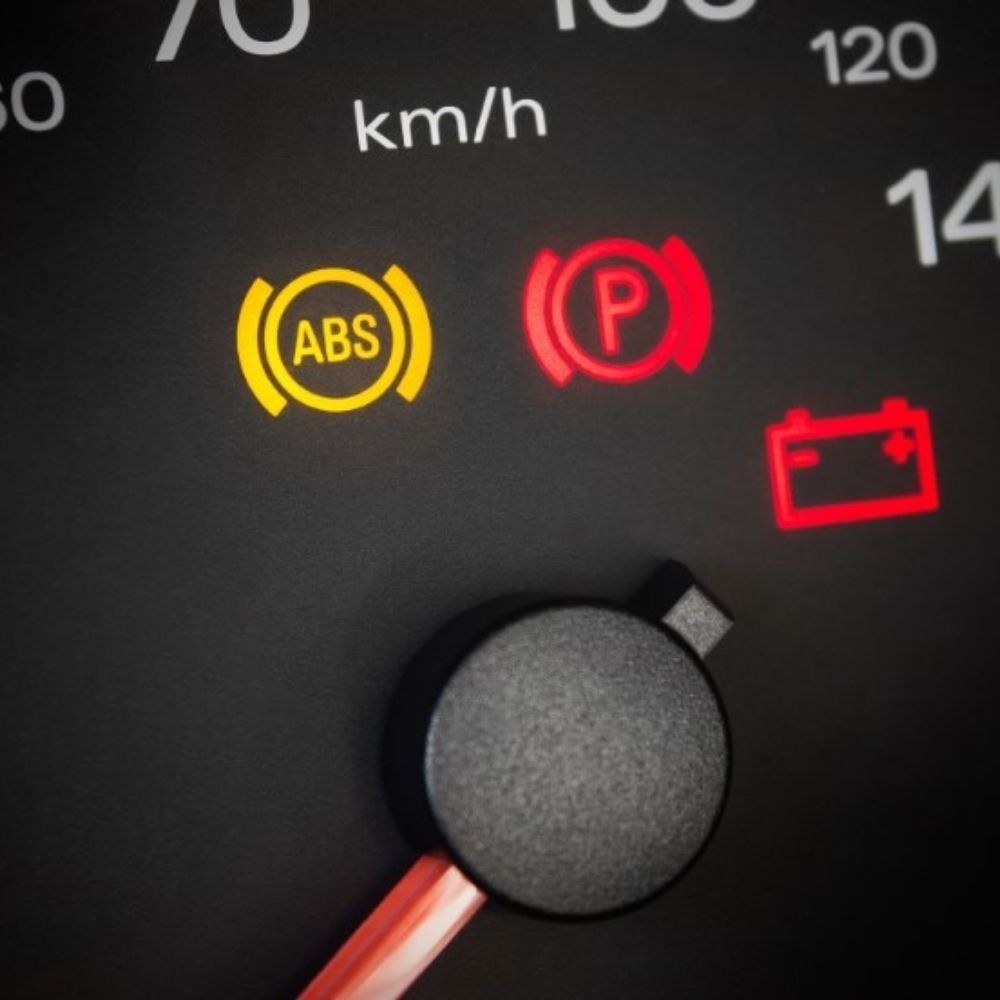
Why Did My ABS Light Come On? Four Reasons Update Latest
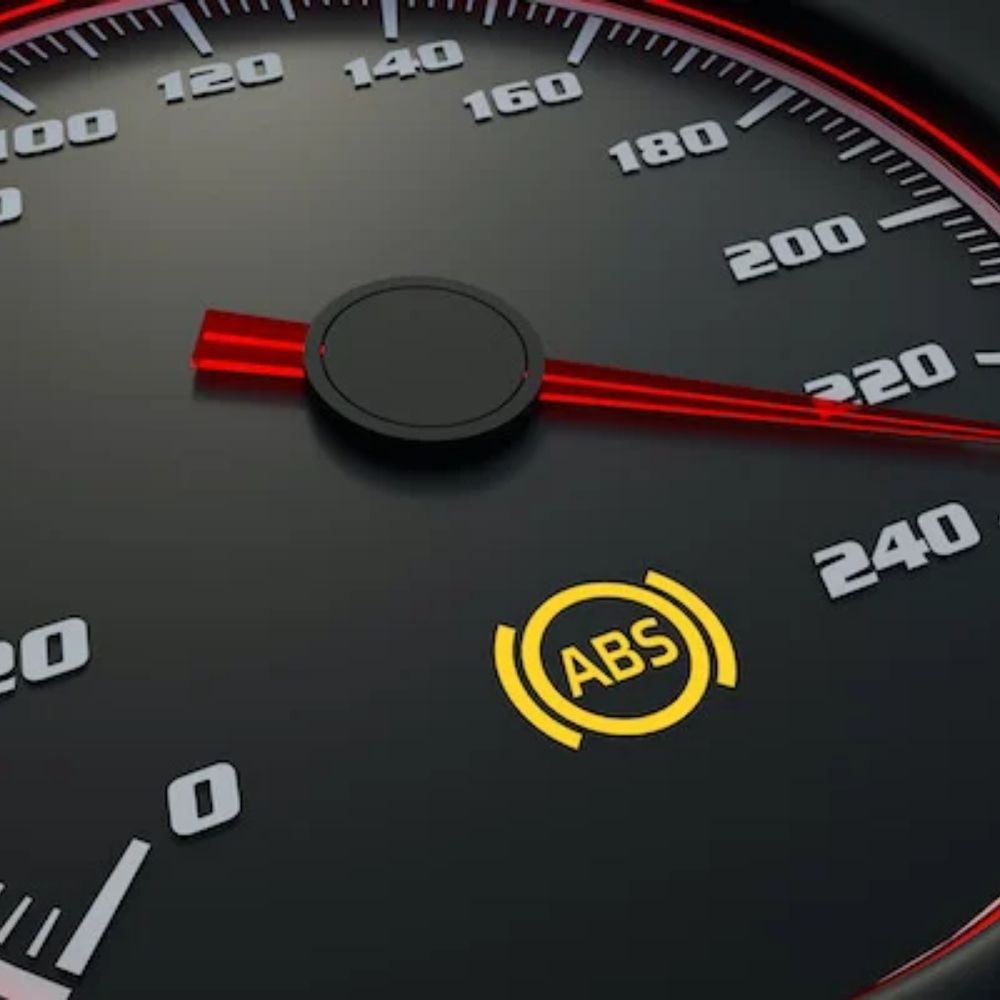
ABS Auto Brake Service – Anti-Lock Brake Service Cost





